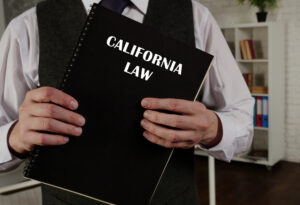Posts Tagged: California Supreme Court
News
AB 1340 represents roughly a decade or more of work by labor in the state. Ever since Uber launched in 2009, there’s been an ongoing, global debate on whether rideshare drivers are indeed independent contractors, as claimed by the apps, or bona fide employees, as claimed by workers and labor advocates.
Micheli Files
Both the Legislature and the Governor in California play critical roles in the development and adoption of the state budget. Relevant provisions of state law related to the budget process are contained in Article IV of the state Constitution.
News
In late March, Sen. Tom Umberg, D-Santa Ana, amended a spot bill, SB 47, to order the State Auditor to conduct an audit of the February 2025 bar exam. The bill would direct the auditor to submit findings “as soon as possible” to the Bar’s board of trustees, the Chief Justice of the California Supreme Court and the Senate Judiciary Committee and its Assembly counterpart.
News
In California, court hearings are regularly held without a verbatim or near-verbatim record ever being created. Some legal advocates say that’s a violation of basic constitutional protections and blame an unusual state law for the problem.
Micheli Files
Many Capitol observers are aware of the single subject rule. Some know that the California Constitution, in Article II, Section 8(d), provides that “an initiative measure embracing more than one subject may not be submitted to the electors or have any effect.” But does a similar rule exist for bills considered by the California Legislature?
Micheli Files
Mainly because legislative committees in the California Legislature have to process so many bills at their limited hearings, there is little public debate, particularly among legislators, regarding bills that are heard in the committees of the State Senate and State Assembly. Nonetheless, there are instances when a legislator’s public statements may be considered by the judiciary.
News
California’s Constitution provides the three branches of government, as well as the rights of direct democracy. Article III, Section 3 provides the separation of powers among the three branches of our state government: legislative, executive, and judicial.
Micheli Files
Some Capitol observers have posed the question whether budget trailer bills in the California Legislature are “shielded” or protected from a referendum challenge. The answer to this question has not been addressed by the judicial branch, but we can certainly make an educated guess. Let’s consider a few points.
Opinion
OPINION – As a nearly 30-year career firefighter, responding to countless man-made and natural disasters, I know better than most Californians how crucial stable funding is in our ability to remain fully staffed and prepared at all times. Californians count on our readiness to minimize injury, property damage and loss of life in a crisis. If a dangerous ballot initiative prevails in November, California’s public safety response will be in peril.
Micheli Files
In the key case to discuss the use of legislative intent materials, we find clear guidance provided by the decision. The appellate court issued its written decision on August 30, 2005 and, since then, it has been cited affirmatively more than 80 times.










